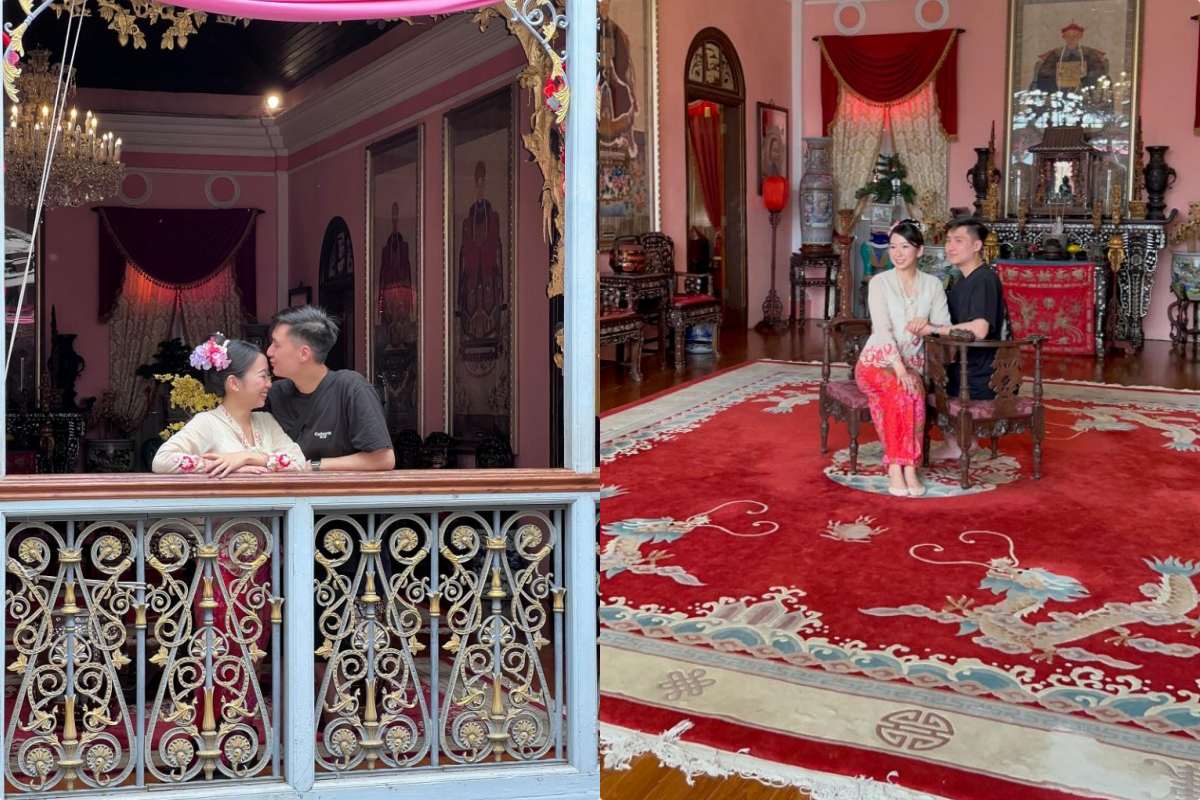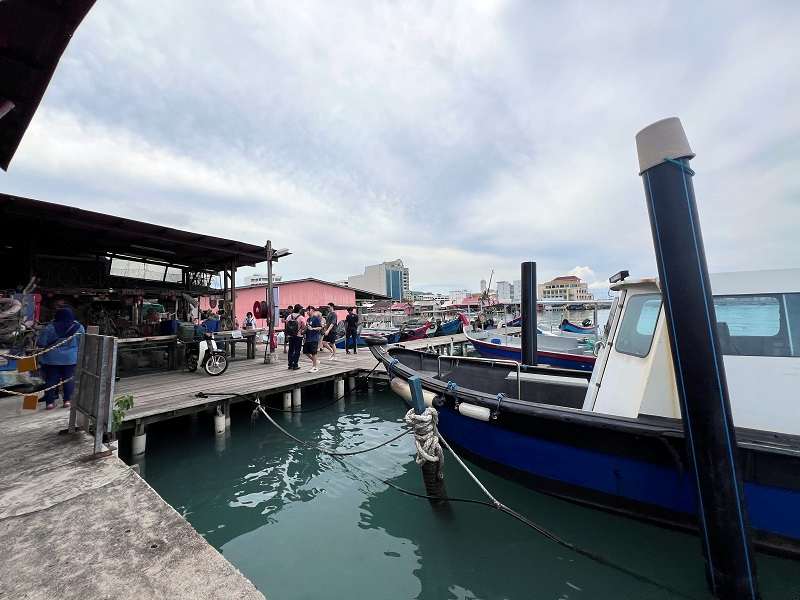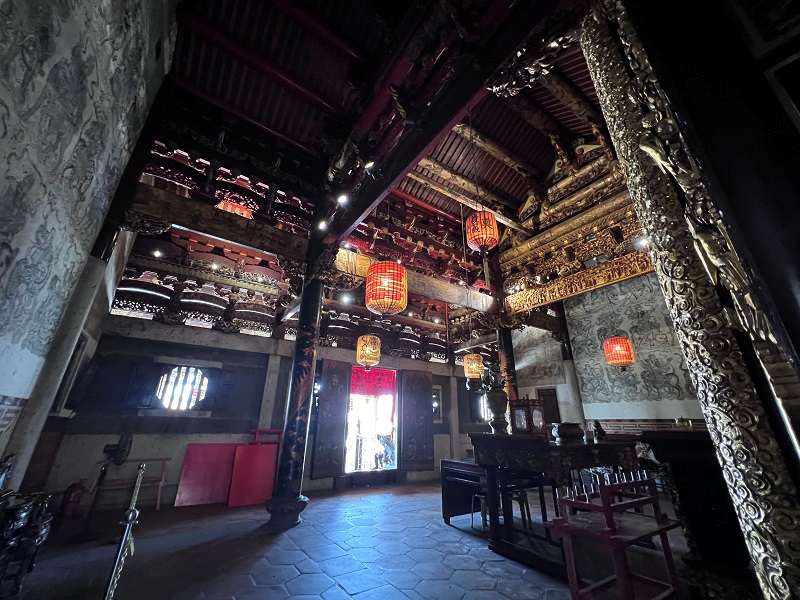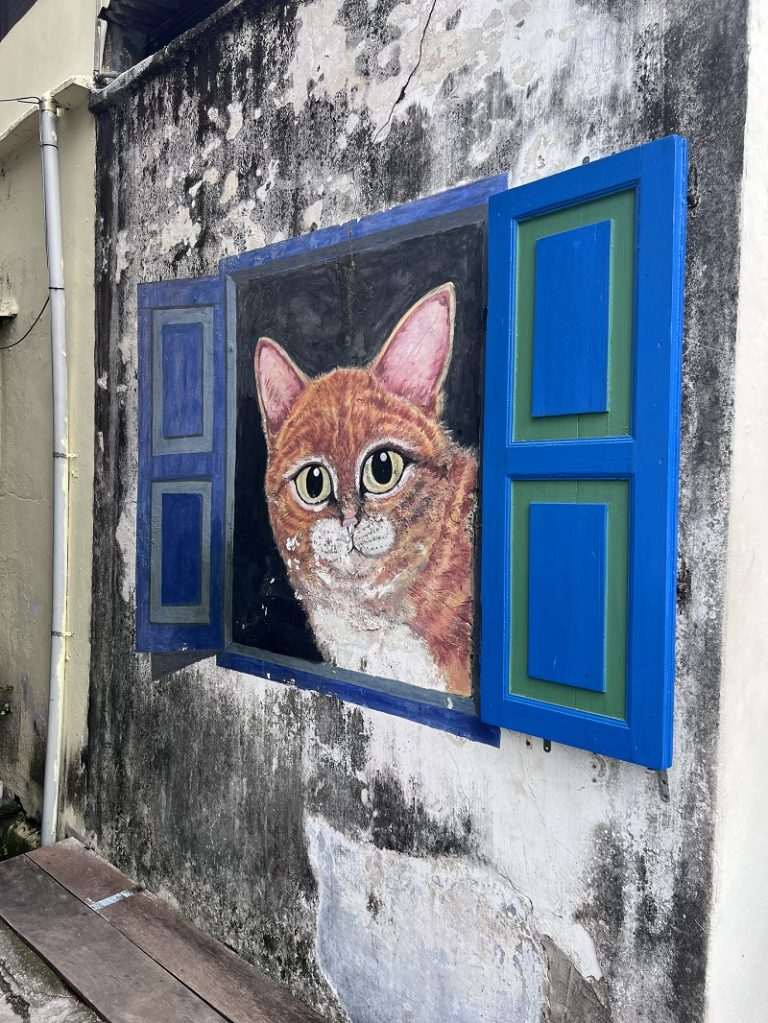Penang is a melting pot of cultures, history and flavours, offering an enriching experience for travellers seeking to explore its unique heritage.

Image: Analisa Amu
Located on Malaysia’s west coast, the island’s UNESCO World Heritage-listed George Town showcases a captivating blend of colonial architecture, vibrant street art, and bustling markets.
With its majestic temples, lively districts, and scenic views, the ‘Pearl of the Orient’ provides an unforgettable experience that artfully intertwines tradition with contemporary charm.
In our recent trip with Freme Travel Services, we explored some amazing must-visit iconic places, each offering a glimpse into the island’s rich past and dynamic present.

Image: Analisa Amu
Pinang Peranakan Museum
Start your journey at the Pinang Peranakan Museum, a beautifully restored mansion that once belonged to a wealthy businessman Kapitan Cina Chung Keng Kwee.
Built at the end of the 19th century, the ‘Hai Kee Chan’ or Sea Remembrance Store once served as the residence and office of the Penang tycoon.
Located amidst the shophouses along Church Street, the mansion is a courtyard house, donning a stunning green exterior and decorated with a luxurious classic interior.

Image: Analisa Amu
The Peranakans of Penang, also known as ‘Baba and Nyonya’, are descendants of Chinese immigrants who settled in the Malay Archipelago and married local Malays, creating a distinctive culture that blends Chinese and Malay traditions, cuisine, language, and attire.

Image: Analisa Amu
Although Kapitan Chung was not a Baba or Peranakan, he incorporated the designs, lifestyle, and traditions of the Straits Chinese community. Lavishly furnished with antique furniture, intricate woodwork, and ornate tiles, the museum showcases the unique blend of Chinese and Malay influences that define Peranakan culture.

Image: Analisa Amu
Once stepping inside the two-floor mansion, visitors will be amazed by the mansion-themed rooms and an ancestral temple located in the courtyard. You may opt to tour the place on your own or follow a guided tour where visitors will be briefed on the history and significance of every room and feature of the mansion.
For the ladies, to make your visit to be more immersive, bring yourself to the costume room where you will be groomed with makeup and hair styled while wearing the ‘Kebaya Nyonya’, just like the Peranakan women in the olden days.




Image: Analisa Amu
The mansion may be huge to explore so take your time to experience the ambiance and take several photos for the memories.
Find out more about the museum on their website http://www.pinangperanakanmansion.com.my


Image: Analisa Amu
Chew Jetty
Next, visit the Chew Jetty, one of the oldest and most well-preserved clan jetties in Penang that forms part of George Town.
Established in the late 19th century, the floating village was created by Chinese immigrants from the Chew clan, who built stilt houses and settled along the waterfront. The wooden houses were built on stilts, offering a rare look at the traditional way of life of the Chinese settlers in the past.


Image: Analisa Amu
Visiting the Chew Jetty offers a distinctive experience where you can stroll along the wooden walkways, observe the traditional stilt houses, and immerse yourself in the vibrant community atmosphere.
The jetty is spotted with small shops selling handmade crafts and charming eateries serving local delicacies. Do not miss the picturesque views of the waterfront, especially during sunset, when the sky paints a beautiful backdrop for the jetty’s rustic charm.
A visit to the jetty not only provides a serene escape but also a meaningful connection to Penang’s multicultural heritage and the enduring spirit of its early settlers.


Image: Analisa Amu
Kek Lok Si Temple
No heritage tour of Penang is complete without a visit to Kek Lok Si, one of Southeast Asia’s largest and most magnificent Buddhist temples.
Sitting atop a hill in Air Itam, this extensive temple complex features stunning architecture, beautifully landscaped gardens, and the towering 36-metre-tall statue of the Goddess of Mercy, Kuan Yin. The temple’s intricate carvings and sacred shrines offer a peaceful retreat and a deeper understanding of Penang’s spiritual heritage.




Image: Analisa Amu
Its construction began in 1890, initiated by Beow Lean, a devout Buddhist from Fujian, China, and has since become a prominent pilgrimage site.
The temple complex reflects a blend of Mahayana and Theravada Buddhism, showcasing Chinese, Thai, and Burmese architectural styles.


Image: Analisa Amu
Other than the Goddess of Mercy statue that overlooks the temple grounds, visitors can also find the seven-story Pagoda of Ten Thousand Buddhas, the Hall of Heavenly Kings, the Pond of Longevity filled with turtles, and numerous intricately decorated pavilions and shrines, each offering a tranquil space for prayer and reflection.
Visitors can enjoy a serene experience by taking a stroll through the lush gardens and climbing the temple’s many staircases to enjoy panoramic views of Penang. You may also opt to take the inclined elevator up and down the temple if you cannot climb up the stairs.


Image: Analisa Amu
Little India
Step into Little India, a bustling neighbourhood that immerses you in the sights, sounds, and aromas of South Asia.
Located in the heart of George Town, Little India in Penang is home to colourful temples, spice shops, and traditional Indian clothing stores.
Established in the early 19th century, this area became a hub for Indian immigrants who arrived in Penang for trade and work opportunities. Over the years, Little India has evolved into a bustling district teeming with colourful shops, aromatic spice stores, and a plethora of Indian eateries, preserving the traditions and customs of its early settlers.



Image: Analisa Amu
The main attractions in Little India include the Sri Mahamariamman Temple, the oldest Hindu temple in Penang, which stands as a testament to the enduring faith of the Indian community.
Visitors can also explore the Kapitan Keling Mosque, another historic landmark reflecting the multicultural essence of George Town. The streets are lined with shops selling traditional Indian clothing, jewellery, and handicrafts, making it a shopper’s paradise.
As you wander through the streets, the lively atmosphere and rich cultural heritage of Penang’s Indian community come alive, offering a sensory experience like no other.


Image: Analisa Amu
Wonderfood Museum Penang
For a quirky yet educational stop, head to the Wonderfood Museum Penang, where food meets art. The museum was opened in 2015 to showcase the vibrant food culture of Penang and Malaysia through larger-than-life replicas of local dishes. It is a fun and interactive way to learn about the island’s diverse food culture, which has earned it the title of a food paradise.
The museum was created by Sean Lao, a food enthusiast who aimed to highlight the importance of food in Malaysian culture through larger-than-life exhibits and interactive displays.



Image: Analisa Amu
Visitors can explore various sections that depict different types of cuisine, including street food, traditional dishes, and modern culinary creations such as Nasi Lemak, Char Kway Teow, Satay, Asam Laksa, Cendol and Teh Tarik, among others.
Each exhibit is meticulously crafted to showcase the textures, colours, and presentation of the food, offering a visually stunning experience. Additionally, the museum provides educational information about the origins, ingredients, and cultural significance of each dish, allowing visitors to gain a deeper appreciation of Malaysia’s food heritage.
Plan your trip and find out more about the museum at https://mypenang.gov.my/culture-heritage/directory/


Image: Analisa Amu
Khoo Kongsi
The Khoo Kongsi clan house is a true architectural marvel and an indication of the legacy of the Khoo clan, one of the wealthiest Chinese clans in Penang.
Located at the Cannon Square in George Town, it is one of the most impressive and well-preserved clan houses in Malaysia.
Established in the early 19th century by the Khoo clan, a prominent Chinese immigrant family, this elaborate complex served as a social and cultural hub for the Khoo community. The clan house represents the unity and success of the Khoo clan and has become a significant landmark, reflecting the rich heritage and traditions of the Chinese in Penang.



Image: Analisa Amu
What makes Khoo Kongsi fascinating is its stunning architecture and intricate craftsmanship. The main hall Leong San Tong, a masterpiece, features ornate carvings, detailed murals, and beautifully crafted stone and woodwork. The roof is adorned with intricate sculptures of dragons, phoenixes, and other mythical creatures, symbolising prosperity and protection.
Inside, visitors can admire the elaborate ancestral tablets, stunning ceramic sculptures, and historical artefacts that tell the story of the Khoo clan’s history and achievements. The clan house complex also includes a traditional theatre and several courtyards, offering a glimpse into the cultural practices and social life of the Chinese community in Penang.


Image: Analisa Amu
Visiting Khoo Kongsi is like stepping back in time, offering insights into the social and cultural importance of clan houses in Penang’s Chinese community.
At the lower part of the clan house, you can find informative displays on the history and background of Khoo Kongsi where you can either explore on your own or with a guide.
The blend of historical significance, architectural beauty, and cultural richness makes Khoo Kongsi a must-visit destination in Penang.

Image: Analisa Amu
Penang Art Street
When one says Penang, other than its delectable cuisines, its vibrant street art comes to mind, making it a major tourist attraction in the city.
The street art is particularly concentrated around Armenian Street and its surrounding lanes, featuring charming murals and artworks such as Children on a Bicycle, Boy with a Helmet, The Motorcycle, The Little Girl on a Swing and I Want Pau, among others.
The street art scene began to take shape in 2012 under the “Mirrors George Town” initiative in 2012 which was a collaboration between the Penang State Tourism Development Office and Lithuanian artist Ernest Zacharevic.


Image: Analisa Amu
The murals on Penang Art Street which acts as an open-air gallery were created to reflect the daily life, culture, and history of George Town. Renowned artists, local and international, were commissioned to contribute their unique styles, resulting in a diverse array of artworks and transforming historic walls into colourful canvas.
These murals often incorporate elements of Penang’s heritage, including its multicultural influences and historical landmarks. The vibrant murals also create excellent photo opportunities, making Penang Art Street a favourite spot for both tourists and locals looking to capture the essence of Penang’s creative spirit.

Image: Analisa Amu
As the paintings are scattered around the area, you can choose to explore them on foot or rent a trishaw where you will be cycled to some of the famous murals.
A heritage tour of Penang is more than just a journey through time; it is an exploration of the island’s soul.


Image: Analisa Amu
Every site offers a unique perspective on Penang’s diverse history, making it a must-do for anyone looking to experience the true essence of the island. Whether you’re a history buff, a culture enthusiast, or a curious traveller, Penang promises an enriching and memorable journey through its diverse heritage.
Stay tuned for the next issue as we explore Penang’s scrumptious and varied food scene!

Image: Analisa Amu
Travel advertorial for Freme Travel Services